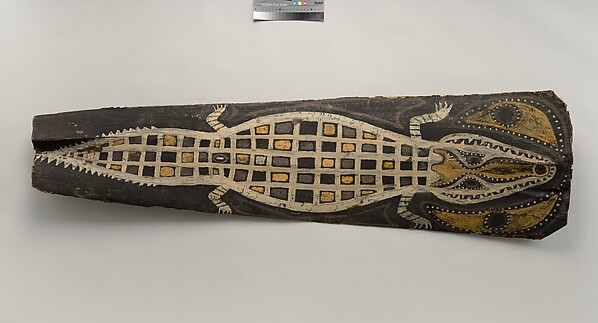The NanoRestArt project is a multinational network of conservators, scientists, and industry partners working to develop and test novel nanotechnology-based materials intended for the conservation and preservation of modern and contemporary cultural heritage. Funded by an EU Framework Programme for Research and Innovation Horizon 2020 grant, the project consists of 27 partners, most of which reside in the European Union. The research and development process for these tools is divided into four major categories: gels and nanostructured fluids for cleaning, nanocontainers and nanoparticles for surface protection and strengthening, sensors for molecular detection, and environmental impact of the new materials. As a partner in NanoRestArt, the Tate is investigating the development and evaluation of cleaning systems in collaboration with the Research Center for Colloids and Nanoscience (CSGI), who developed the nano-structured cleaning agents.
Dr. Angelova’s discussion of her work with the Tate and the NanoRestArt project focused on testing nano-structured cleaning systems, investigating their effects on Michael Dillon’s Op Structure sculptures and on mock-ups intended to replicate the properties of the artwork. Chemical analysis of one Op Structure sculpture revealed that it is made entirely of poly(methyl methacrylate), or PMMA, and adhered with PMMA cement. It is an excellent candidate for the NanoRestArt evaluation process because it is composed of a synthetic polymer material which cannot be easily treated with conventional conservation techniques and can benefit from wet surface cleaning. The plastic structure is in very good condition but does show evidence of dust accumulation and surface soiling from handling as well as adhesive labels in need of removal.

The mock-up samples were created by treating a series of semi-opaque acrylic polymer sheets with a variety of soiling materials to mimic finger grease, dirt, and adhesive labels, also including some un-soiled control surfaces. In addition, a range of materials were used to clean the samples including the novel NanoRestArt gels created by CSGI as well as typical cleaning agents used by conservators. PMMA is a highly glossy material which is easily scratched by surface wiping and dissolved by many common solvents. The NanoRestArt gels were therefore chosen as appropriate cleaning materials to avoid such issues during cleaning, and can be loaded with a variety of fluids for cleaning purposes.
The evaluation process involved treating each soiled and control mock-up sample surface in triplicate using each cleaning method, and evaluating the results using a Hirox microscope, gloss meter, colorimeter, and infrared spectrometer. Conservators rated each cleaning agent based on its ease of use, health and safety characteristics, control, soil removal effectiveness, tendency to leave residues, and gloss change using a number system. After treating the mock-up samples, the Tate research team found that to the naked eye, simple cleaning solutions (such as saliva or deionized water) worked well to remove the soil, but left scratches and streaks when viewed under the microscope. Additionally, soiled surfaces cleaned with gels showed evidence of gel residues and microdroplets as the sample surfaces are non-absorbant. The best cleaning results derived from a microcloth moistened with a combination of a surfactant and a chelator known as triammonium citrate. For the adhesive labels, some microemulsion cleaning agents were successful in removing them from mock-up samples. Dr. Angelova mentioned that they were not able to load the microemulsions into the NanoRestArt gels, but this would probably be an ideal cleaning solution.

When working with the actual Op Structure sculptures, conservators chose to clean a small, inconspicuous soiled area, beginning with water and working up to the surfactant and chelator solution – a process which effectively removed dirt without scratching the surface. Based on the mock-up tests, conservators were able to successfully remove adhesive labels from the artwork using a solution of water and isopropyl alcohol.









